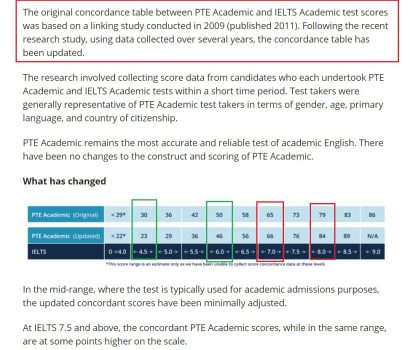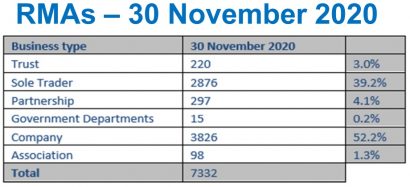ACT (캔버라)로부터 190 / 491 비자용 Nomination을 받고자 한다면
- 자신이 지명하는 직업군도 직업군목록에 포함이 되어 있어야 하지만
- 캔버라의 독특한 Canberra Matrix scoring 이라고 하여 캔버라 거주 & 일한 사람들에게 유리할 수 밖에 없도록 만든 이 점수표에서 다른 사람들 보다 높아야 합니다.
2번과 관련하여 캔버라에서 유학을 마치고 그곳에서 일한 신청인들과 타지역에서 거주하며 유학을 한 경우 어떤 차이가 날 수 있는지 아래 내용을 보고 참고해 봅니다.
Canberra Matrix scoring에 보면 이런 질문들이 있습니다.
첫째 ACT에 거주기간에 따른 차등 점수
How long have you lived in Canberra in the last eight years?
0/1-2 / 2-3 / 3-4 / 4-5 / 5+ years 에 따라 점수가 0 / 5 / 10 / 15 / 20 / 25
그러니까 캔버라에 거주한 것이 고작 1년인 분과 3년인 분의 차이는 10점이 차이가 납니다.
둘째 ACT내에서 무슨 일이든 일한 경우 근무기간에 따른 차등 점수
How long have you worked for an ACT employer in Canberra in the two years immediately before the date of Matrix submission?
근무경력 전무 / 6-12개월 / 12개월 이상 에 따라 점수가 0 / 5 / 10
캔버라에서 근무 유무에 따라 점수가 10점 차이날 수 있음
(근무는 주당 20시간 / 자영업도 인정)
셋째 ACT내에서 ACT에서 요구하는 Critical Skill 에 해당하는 직업군으로 일한 경우
Are you currently working for an ACT employer in Canberra in a highly skilled position?
최소 0점에서 최대 20점까지 얻을 수 있음
- You are working in your nominated occupation which is on the current ACT Critical Skills List. Your occupation must be recorded as ‘relevant’ on your SkillSelect EOI. (20점)
- You are the primary holder of a subclass 457 / 482 visa and you are working for the ACT employer who sponsored your visa. Your occupation must be recorded as ‘relevant’ on your SkillSelect EOI. (15점)
- You are working in an occupation that is on the current ACT Critical Skills List; but it is not your nominated occupation. (10점)
- You are working in an occupation that has an ANZSCO skill level 1 to 3. (5점)
5. Not applicable. (0점)
넷째, 배우자가 있는 분들의 경우 배우자가 ACT내에서 / 근교에서 거주하며 출퇴근한 경우
Is your spouse / partner currently working in the ACT or surrounding ‘commuter’ region?
- They are working in an occupation on the ACT Critical Skills List. They must have a skill assessment relevant to their current employment. Their taxable income must be no less than $26 per hour (excluding casual loading). (15점)
- They have a current skill assessment and it is relevant to their current ACT employment. Their gross income must be no less than $26 per hour (excluding casual loading). (10점)
- They are currently working in any occupation, at any skill level, in Canberra. (어떤 일을 해도 5점)
-
- They do not meet the 3 months employment criterion, but they have a: (이런 경우도 5점을 받을 수 있음)
- Tertiary qualification (requiring at least 3 years full time continuous study) from an Australian or overseas institution in any occupation; and
- A valid English test result at a minimum level of ‘competent’ English; or hold an Australian or valid passport as defined by Home Affairs.
- Not applicable. (0점)
다섯째, ACT에 있는 학교에서 유학을 마친 경우 주는 차등 점수
For how many years did you study fulltime to complete a CRICOS* registered course, and / or attend a Professional Year (PY) program, at an ACT institution in the last eight years?
0년 / 1 / 2 / 3 / 4년+ 에 따라 점수가 0 / 5 / 10 / 15 / 20
그리고 여섯번째, ACT에 친인척 (시민권자 / 영주권자)이 거주를 할 경우 최대 20점 또는 10점 을 얻을 수 있습니다.
그러니 ACT에서 491 / 190 비자를 위한 Nomination을 고려한다면 애초에 유학부터 ACT에서 시작하고 직장도 무슨 일이든 해서 점수를 더 확보해야지 그 기회가 높아집니다. 타지역에서 공부하고 타지역에서 거주하다가 내 직업군이 ACT에 포함되었다고 해서 좋다고 온들 nomination 은 Canberra Matrix scoring 으로 Highest Points를 갖는 분들을 먼저 선택해 주기 때문에 ACT에서 공부하고 일한 사람들보다 점수가 높을 수가 없다는 점입니다. 특히 ACT에서 고등학교 부터 다닌 candidate에 있다고 한다면 일단 출발선이 달라서 타지역 에서 공부하고 일했던 사람들은 도저히 높은 점수를 갖을 가능성이 매우 희박하다고 할 수 있겠습니다. 결국 그러면 nomination 을 위해 초대 받는데 어려움이 매우 높다고 쉽게 예상할 수 있을 것입니다. 향후 유학하실 분들 지금 타지역에서 ACT로 이동하려는 분들은 이점을 잘 들여다 봐야 합니다.
그리고 아래 내용은 현재도 유효한 직업군목록이며 Nomination places은 3개월 이상이 지난후이기 때문에 (발표후) 더 줄어들었을 가능성이 높겠습니다.
그리고 ACT의 경우 학생비자를 받고 학사 / 석사 / 박사과정을 공부를 할 경우 자녀의 학비는 면제될 수 있으니 이 또한 장점이 될 수 있습니다. 내용보기여기클릭
| ACT CRITICAL SKILLS LIST – January 2021 | |||
| ANZSCO MAJOR Group | Nomination places available each month | ANZSCO | NOMINATED OCCUPATION |
| 1324 | Less than 10 | 132411 | Policy and Planning Manager (491 only) |
| 1335 | Less than 5 | 133512 | Production Manager (Manufacturing) |
| 1351 | Less than 5 | 135112 | ICT Project Manager |
| 135199 | ICT Managers (nec) | ||
| 1399 | Less than 5 | 139911 | Arts Administrator or Manager |
| 139912 | Environmental Manager | ||
| 1492 | Less than 5 | 149211 | Call or Contact Centre Manager (491 only) |
| 149212 | Customer Service Manager | ||
| 2124 | Less than 5 | 212411 | Copywriter |
| 212412 | Newspaper or Periodical Editor | ||
| 212413 | Print Journalist | ||
| 212415 | Technical Writer | ||
| 212416 | Television Journalist | ||
| 212499 | Journalist & other writers (nec) | ||
| 2211 | Less than 10 | 221111 | Accountant (General) |
| 221112 | Management Accountant | ||
| 221113 | Taxation Accountant | ||
| 2244 | less than 10 | 224412 | Policy Analyst (491 only) |
| 2249 | Less than 5 | 224912 | Liaison Officer (491 only) |
| 224914 | Patents Examiner (491 only) | ||
| 224999 | Information and Organisation Prof. nec (491 only) | ||
| 2321 | Less than 10 | 232111 | Architect |
| 232112 | Landscape Architect | ||
| 2324 | Less than 5 | 232411 | Graphic Designer |
| 232412 | Illustrator | ||
| 232414 | Web Designer | ||
| 2332 | 233211 | Civil Engineer | |
| 233212 | Geotechnical Engineer | ||
| Less than 5 | 233213 | Quantity Surveyor | |
| 233214 | Structural Engineer | ||
| 233215 | Transport Engineer | ||
| 2339 | Less than 5 | 233911 | Aeronautical Engineer |
| 233912 | Agricultural Engineer | ||
| 233913 | Biomedical Engineer | ||
| 2411 | Less than 5 | 241111 | Early Childhood (Pre-Primary School) Teacher |
| 2513 | Less than 5 | 251311 | Environmental Health Officer (491 only) |
| 251312 | Occupational Health and Safety Adviser | ||
| 2523 | Less than 5 | 252311 | Dental Specialist |
| 252312 | Dentist (491 only) | ||
| 2524 | Less than 5 | 252411 | Occupational Therapist |
| 2525 | Less than 5 | 252511 | Physiotherapist |
| 2527 | Less than 5 | 252711 | Audiologist |
| 252712 | Speech Pathologist | ||
| 2531 | Less than 5 | 253111 | General Practitioner |
| 253112 | Resident Medical Officer | ||
| 2544 | Less than 10 | 254411 | Nurse Practitioner |
| 254412 | Registered Nurse (Aged Care) | ||
| 254413 | Registered Nurse (Child & Family Health) | ||
| 254414 | Registered Nurse (Community Health) | ||
| 254415 | Registered Nurse (Critical Care & Emergency) | ||
| 254416 | Registered Nurse (Developmental Disability) | ||
| 254417 | Registered Nurse (Disability & Rehabilitation) | ||
| 254418 | Registered Nurse (Medical) | ||
| 254421 | Registered Nurse (Medical Practice) | ||
| 254422 | Registered Nurse (Mental Health) | ||
| 254423 | Registered Nurse (Perioperative) | ||
| 254424 | Registered Nurse (Surgical) | ||
| 254425 | Registered Nurse (Paediatrics) | ||
| 254499 | Registered Nurses (nec) | ||
| 2611 | Less than 15 | 261111 | ICT Business Analyst |
| 261112 | Systems Analyst | ||
| 2613 | Less than 40 | 261311 | Analyst Programmer |
| 261312 | Developer Programmer | ||
| 261313 | Software Engineer | ||
| 261314 | Software Tester | ||
| 261399 | Software and Applications Programmers nec | ||
| 2621 | Less than 10 | 262111 | Database Administrator |
| 262112 | ICT Security Specialist | ||
| 262113 | Systems Administrator | ||
| 2631 | Less than 5 | 263111 | Computer Network & Systems Engineer |
| 263112 | Network Administrator | ||
| 263113 | Network Analyst | ||
| 2632 | Less than 5 | 263211 | ICT Quality Assurance Engineer |
| 263212 | ICT Support Engineer | ||
| 263213 | ICT Systems Test Engineer | ||
| 263299 | ICT Support and Test Engineers (nec) | ||
| 2721
|
Less than 5 | 272111 | Careers Counsellor |
| 272112 | Drug and Alcohol Counsellor | ||
| 272113 | Family and Marriage Counsellor | ||
| 272114 | Rehabilitation Counsellor | ||
| 272115 | Student Counsellor | ||
| 272199 | Counsellors nec | ||
| 2723 | Less than 5 | 272311 | Clinical Psychologist |
| 272312 | Educational Psychologist | ||
| 272313 | Organisational Psychologist | ||
| 272314 | Psychotherapist | ||
| 272399 | Psychologist (nec) | ||
| 2724 | Less than 5 | 272412 | Interpreter |
| 272413 | Translator (491 only) | ||
| 272499 | Social Professionals (nec) |
| 2725 | Less than 5 | 272511 | Social Worker |
| 2726 | Less than 5 | 272611 | Community Arts Worker (491 only) |
| 272612 | Recreation Officer | ||
| 272613 | Welfare Worker | ||
| 3312 | Less than 5 | 331211 | Carpenter and Joiner |
| 331212 | Carpenters | ||
| 331213 | Joiner | ||
| 3421 | Less than 5 | 342111 | Airconditioning and Refrigeration Mechanics |
| 3513 | Less than 5 | 351311 | Chef |
| 3622 | Less than 5 | 362211 | Gardener (General |
| 362212 | Aborist | ||
| 362213 | Landscape Gardener | ||
| 3911 | Less than 5 | 391111 | Hairdressers |
| 4117 | Less than 5 | 411711 | Community Worker |
| 411712 | Disabilities Services Officer | ||
| 411713 | Family Support Worker | ||
| 411715 | Residential Care Officer | ||
| 411716 | Youth Worker | ||
| 4523 | Less than 5 | 452321 | Sports Development Officer |
| 5111 | Less than 10 | 511111 | Contract Administrator |
| 511112 | Program or Project Administrator |
ACT에서 유학을 하실 분들 타지역으로 이동을 하시는데 ACT를 고려하는 분들에게 도움이 되길 바라면서…
Last update: 2021년 2월 9일
물맑은 호주이민닷컴
이민법무사 (0208335)
신순철



